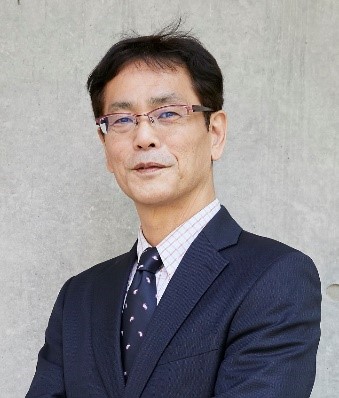Mamoru Furuta
TFTs for Display
School of Environmental Science and Engineering, Kochi University of Technology, Kami, Kochi, 782-8502, Japan
Email: furuta.mamoru@kochi-tech.ac.jp
Biography
Mamoru Furuta is a Professor at Department of Environmental Science and Engineering of Kochi University of Technology, Japan. His current research interests are metal oxide semiconductors for TFTs and their application to display and flexible devices. In 1988-2004, he worked in the Central Research Laboratory of Panasonic, and Toshiba Matsushita Display Technology Co., Ltd.. Japan. He had wide variety of job experiences in company from the R&D to mass production including a startup of the polycrystalline silicon thin-film transistors (TFT) factory in Singapore. Since 2005, he joined Kochi University of Technology, and has been working on the research of metal oxide semiconductors for TFT. In 2006, he demonstrated the worlds’ first liquid crystal display (LCD) driven by oxide (ZnO) TFTs at the conference of the Society for Information Display (SID’06) which was held at San Francisco, USA. He received the Distinguished Paper Award and Special Recognition Award from the SID in 2006 and 2021, respectively. He also awarded the Niwa-Takayanagi Paper Award from the Institute of Image Information and Television Engineers (ITE, Japan) in 2011. He is a member of editorial board of Applied Physics Express (APEX) and Japanese Journal of Applied Physics (JJAP), Japan Society of Applied Physics, and a senior member of the IEEE.
Abstract for Presentation
Solid phase crystallization (SPC) of hydrogen-doped indium oxide (InOx:H) for high mobility thin-films transistors
An amorphous oxide semiconductor of In–Ga–Zn–O (IGZO) has attracted particular attention for thin-film transistor (TFT) applications owing to its high field effect mobility (μFE) of more than 10 cm2V−1s−1, steep subthreshold swing, extremely low off-state current, large-area uniformity, and good bias stress reliability. Although the μFE of an IGZO TFT is over one order of magnitude higher than that of an amorphous Si TFT, further improvement of the μFE of oxide TFTs is required to expand their range of applications as an alternative to polycrystalline Si TFT. A single-crystalline In2O3 has a Hall mobility as high as 160 cm2V−1s−1, which makes poly-InOx a potential material for enhancing the μFE of oxide TFTs. However, it is known that undoped InOx thin films exhibit a high background electron density, which is attributed to the presence of oxygen vacancies, making them unsuitable for a channel material of the TFTs.
In this presentation, we demonstrate the hydrogen-doped poly-InOx (InOx:H) thin films which were prepared by low-temperature (250°C) solid phase crystallization (SPC). First, an amorphous InOx:H thin film was deposited by sputtering in Ar, O2, and H2 gases. Then, an amorphous to polycrystalline phase transition (SPC) of the film was achieved after post deposition annealing at more than 175 °C. For the SPC in air, the background carrier density of the film significantly reduced below the metal-semiconductor transition threshold (<4 × 1018 cm−3), which is approximately three orders of magnitude lower from the initial amorphous InOx:H film. The TFTs with a 50 nm-thick nondegenerate poly-InOx:H channel could be fully depleted by a gate electric field. A maximum μFE of 125.7 cm2V−1s−1 was achieved by the TFT with the poly- InOx:H channel. The use of the SPC poly- InOx:H film is a promising approach to boost the μFE of oxide TFTs.1-3)
References
[1]. Furuta, M.; Shimpo, K.; Kataoka. T.; Tanaka, D.; Matsumura, T.; Magari, Y.; Velichko, R.; Sasaki, D.; Kawashima, E.; Tsuruma. Y.; SID Symp. Dig. Tech. Paper. 52, p.69 (2021).
[2]. Kataoka, T.; Magari, Y.; Makino, H.; and Furuta, M.; Materials 15(1), p.187 (2022).
[3]. Magari, Y.; Kataoka, T.; Yeh, W.; Furuta, M.; Nature communications13 p.1078 (2022).
WELCOME TO CHINA TO ATTEND THE ICANS
23-26 August, Nanjing, China
Connect with us:



